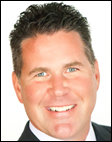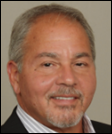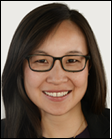HIStalk Interviews Mark Savage, Director of Health Policy, UCSF’s Center for Digital Health Innovation
Mark Savage, JD is director of UC San Francisco’s Center for Digital Health Innovation in San Francisco, CA.

Tell me about yourself and what the Center for Digital Health Innovation does.
I am the director of health policy at the Center for Digital Health Innovation at UC San Francisco. The Center, in some ways, connects a lot of different parts at UC San Francisco, both on the academic side and on the medical center side, trying to build in digital health and innovation within digital health.
Folks may not know this, but UC San Francisco has a deep history in the precision medicine initiative, well before President Obama announced it in his State of the Union. UC San Francisco has done a lot of work on HL7 standards, before the Meaningful Use Program, and the 2015 edition of Certified EHR Technology. We’re one of the top-ranked medical centers in the nation, according to US News and World Report.
We have an interesting mix of delivery systems. We have a medical center, but we also staff the county hospital for the underserved here in San Francisco County and we also staff the veterans’ hospital. We’re a part of an accountable care organization. We bring in lots of different perspectives, bringing together the quality and evidence-based approach of a leading research university.
The Center for Digital Health Innovation works at the center of that to try to build some of that research and effort into systems that can be used by the nation, and indeed the world, going forward.
What was the reaction to your blog post that said EHRs will never be a comprehensive health record as some vendors have claimed?
There’s a lot of people who say, “Yes, that’s exactly what we need. That’s exactly what I believe.” Our blog said “connected health record” and that we’re not alone in thinking that way. We’ve seen from the responses that, indeed, we’re not alone.
I’ll speculate that it’s because that is indeed what the nation needs. We need to be connected. That’s why there’s so much focus on interoperability, as we said in the blog. Standalone EHRs are not meeting the national imperative. Interoperability is a national imperative, according to Congress and the 21st Century Cures Act, and that’s because they need connected health records.
A complete electronic health record and a connected health record are not mutually exclusive. Somebody was saying to me the other day, is it a comprehensive health record or a connected health record? Those aren’t mutually exclusive. You get to the comprehensive and complete health record by being interconnected with all the other sources. I realize from the blog title that sometimes people might think it’s one or the other, but really it’s the connections, the learning health system, that gets us to the true national completeness.
Our complicated health system results in patient information being scattered all over the place. How much of the problem is due to technology rather than it being a reflection of a system that isn’t very logical?
Let me back up even just a little bit further. We are in the midst of some pretty significant systems change and culture change in health information exchange in the United States today. The HITECH Act in 2009 launched us on an absolutely necessary trajectory, an overdue trajectory. So many other parts of our national landscape, our daily lives, are electronic. Finances, commerce, voting, education. But at the time, not really health information and healthcare. So Congress passed the HITECH Act and we have moved a long way in the past nine years, with adoption rates going from, say, 10 percent to around 90 percent.
We know from systems change in other major industries in the country that it’s not perfect. It doesn’t go as smoothly at the beginning as we would like. But that is the nature of building an interstate freeway system or building a national water system. Those kinds of things take some time at the beginning.
That’s in part what’s going on now. We are transitioning to an electronic health information exchange system. It’s not just the technology. It’s not just the logic. It’s trying to bring those things together.
Congress has talked about interoperability because there needs to be better connectivity among the systems. Our lives, our health, our healthcare, and our health data are in motion. We need the connections among those different systems in order to provide the care that people need. And actually, to back up, from treating people at the point of, say, the emergency room and moving more towards prevention and wellness.
Were you surprised by the emphatic announcement at the HIMSS conference by Seema Verma and Jared Kushner that providers have to give patients timely access to their data?
I didn’t have any advance notice that Jared Kushner would be there, but the things that they said are imperative. They’re necessary. Patients and individuals need access to their health data. They have a right to it under HIPAA.
In my career, I’ve been pushing for that for quite some time, both at the policy level and at the implementation level, including building in the capacity to view, download, and transmit one’s health information in the Meaningful Use Program and now the Advancing Care Information piece under MACRA. The innovation in the 2015 Edition of Certified EHR Technology to say that patients also ought to be able to have access through applications using application programming interfaces—the kinds of applications that people are using every day on their smartphones.
Health information exchange is finally catching up with the way that the real world is working for consumers and individuals in the rest of their lives. This is absolutely important. We’ve been pushing for that for a long time. Those kinds of statements meet a need. They speak to it. They speak to a need that patients and consumers have.
I very much look forward to seeing the details of that, though, because I will say that most of the advances that I have seen so far for the reality of patient access to their health information has come through the 2015, the 2014 Edition of Certified EHR Technology, and the Meaningful Use program now under MACRA. Those are the programs that these same announcements said are going to be rolled back. The details will be important. We have to make sure that those capacities remain in place so that patients have genuine access to their health information.
Joe Biden’s op-ed piece says HHS should crack down on providers who won’t give patients an electronic copy of their information within 24 hours of their request. How should the federal government define information blocking and what should they do to eliminate it?
The definition of information blocking is pretty complicated. It gets into a lot of different legal requirements that are already out there. Providers and technology vendors are obliged to comply with the law.
If you don’t mind, I’ll flip around not to focus on information blocking, but to focus on the affirmative. How do we help ensure that there is information flow? That’s one of the major reasons for the blog talking about connected health records — to get people into the mindset of thinking that they don’t just hoard or lock up or collect everything in their own respective electronic filing cabinets, but instead, think about this as the teamwork that it really is.
No one doctor knows everything about a patient. We have referrals to specialists all the time. We end up in emergency rooms and in hospitals when the unexpected happens. We go to laboratories. We go to pharmacies. We travel. Sometimes our care is provided in a state or a nation that’s far from home. We have a teamwork understanding and approach to healthcare, and now with the focus on precision medicine and genomics, we are thinking about how even more pieces of the healthcare system should be working together as a learning health system.
That requires connections and a connected health record for us to move forward. Something as simple as shared care planning, for example, between a doctor and her patient. You have family caregivers. You have these different pieces. We need an electronic platform where each of the members of the care team can plug in the new pieces of information and everybody gets that communication, understands what the change is. Everybody is on the same page and the data are updated seamlessly. That is information flow.
From that perspective, if we’re thinking that way, we don’t really need to be thinking about information blocking any more, because we’re not trying to hoard the data, we’re trying to improve the patient’s care.
What are the challenges in making that happen technically as well as presenting the information to avoid overwhelming a provider?
One of the key things to do is to make sure that certified EHR technology goes into effect quickly. The API access that I was talking about earlier, so that people can access their health information through their smartphones and can use it to make decisions about their health and care. That was supposed to go into effect no later than January 1, 2018, but it was delayed by another year to January 1, 2019. We can’t be putting off the very thing that will make access for patients and individuals much easier and help them to share their information with people who are responsible for their care.
We also need to be building in what you might call bi-directional access. This is not just one way access to health information. Patients have a lot of important information to contribute. Even things as simple as letting the doctor know, did the patient get better or worse after the doctor’s visit?
I remember being at an AMIA policy conference, maybe four years ago, and somebody said from the back, “You know, the single most important piece of information that is missing from the electronic health record is whether the patient got better or worse. That’s the fundamental outcome.”
That’s a good example of what is not a connected health record, where you don’t have the connection between the information that the doctor has and the information that the patient has. That critical information. We need to be building in patient-generated health data. The ability for patients to get key data to doctors, because doctors need access to that data, too. Access is not just a one-way issue. Doctors are missing access to very important information and that connected health record is a way to make that possible.
What incentives will encourage organizations to share that patient information in a central manner and then bring in the patient-reported information for their own decision-making?
When Joe Biden has spoken from the stage about the situation, his personal experience, he talked about how the information should have flowed and did not. When a patient is in an emergency room, the patient should not have to worry about whether one provider or another is thinking competitively about whether they’re going to disclose the health information needed in order to make sure that no allergies are suddenly triggered or that no unnecessary and dangerous tests are ordered. We cannot be thinking that way around people’s health. Patients do not expect that. Consumers do not want that.
I understand what you’re saying, that people are thinking around business models. But the national imperative around healthcare is one where we’ve got to be working together. That’s why the HITECH Act was passed back in 2009. That’s why Congress worked very hard to align incentives and created an incentive program where doctors said, yes, they would accept the incentives in order to adopt and use, meaningfully, for the benefit of patients and the nation, electronic health records, and that it’s not OK to hoard data. I’m not speaking to the important point of preserving privacy and security of health information, but sharing for purposes of treatment, payment, operations, public health, and individual access in a private and secure way. Absolutely that’s what must be happening.


















I dont think anything will change until Dr Jayne and others take my approach of naming names, including how much…